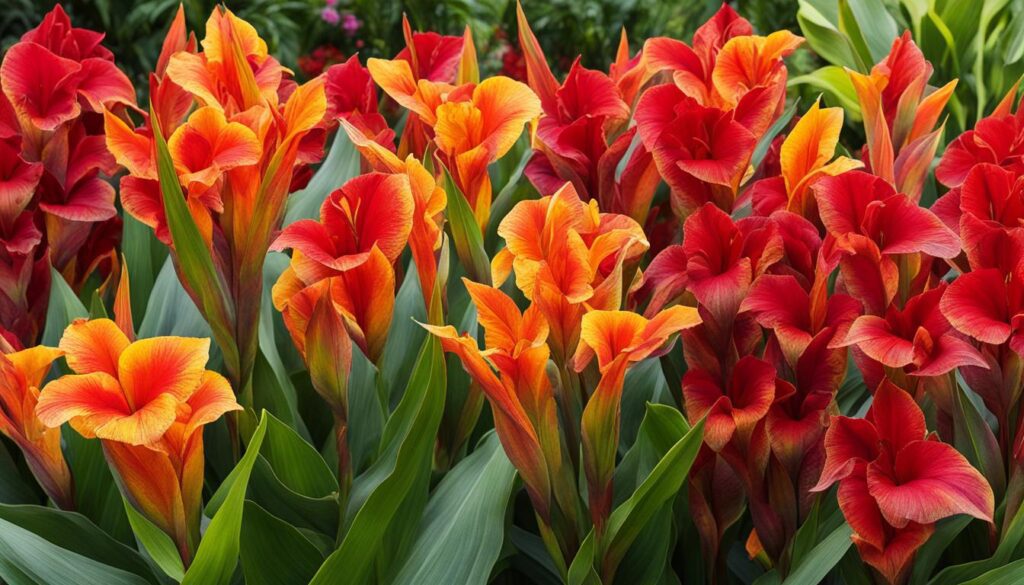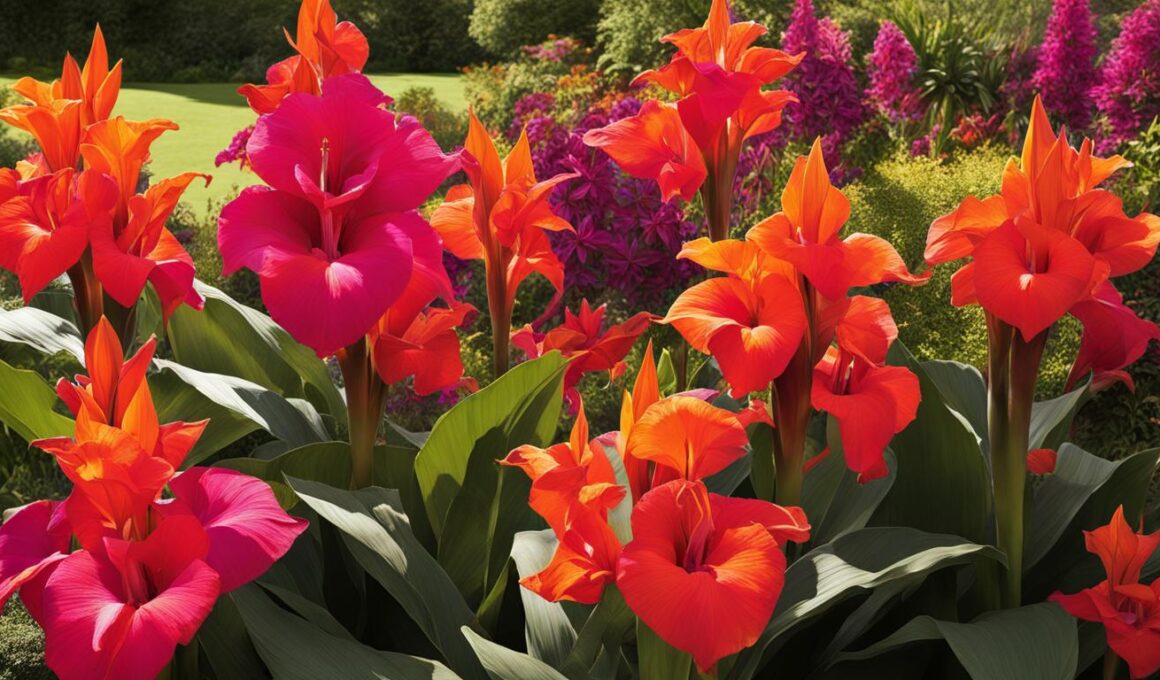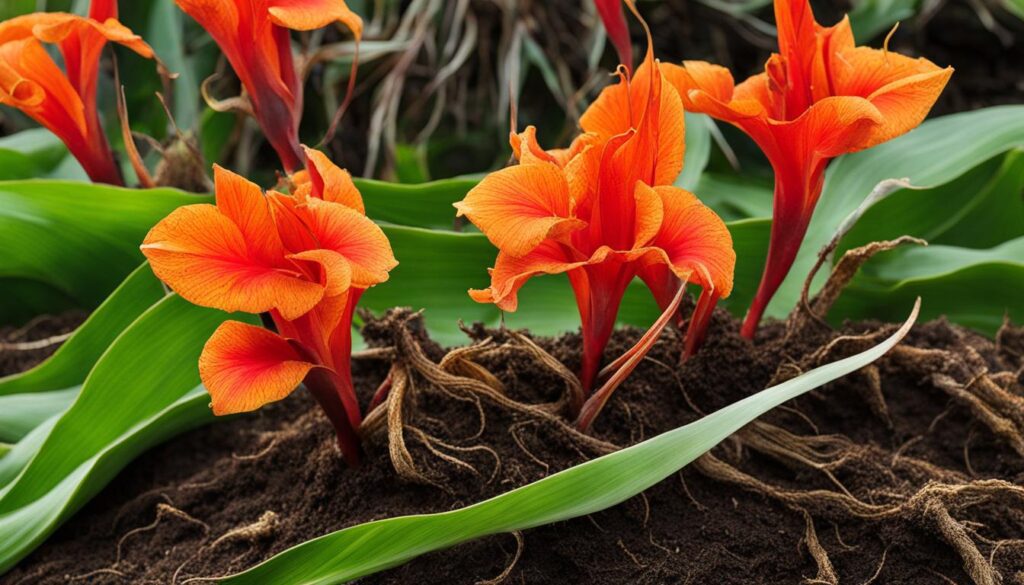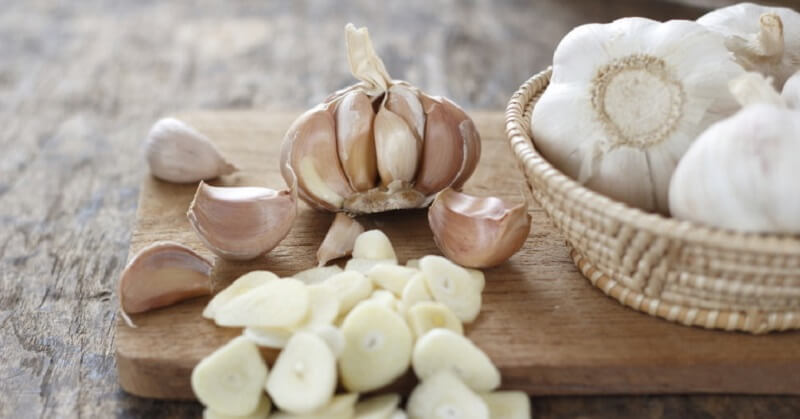Transform your garden into a lush tropical paradise with the stunning canna lily rhizome. These bold and showy plants produce massive blooms in a wide range of colors, accompanied by striking jungle-like leaves. Though not true lilies, canna lilies, as they are commonly called, can create a vibrant and exotic atmosphere in your outdoor space.
To grow canna lilies, all you need is ample sunlight and moisture. They can be grown as annuals almost anywhere, making them a versatile choice for gardeners. Cannas come in various sizes, from dwarf varieties suitable for containers to towering plants that can reach up to 6 feet tall. Regardless of the size, canna lilies are sure to make a statement in any garden.
Key Takeaways:
- Canna lilies can transform your garden into a lush tropical paradise.
- They produce massive blooms in a wide range of colors.
- Canna lilies can be grown as annuals almost anywhere.
- They come in various sizes, from dwarf varieties to towering plants.
- Ample sunlight and moisture are essential for the growth of canna lilies.
Basics of Canna Lily Rhizomes
The canna lily, also known as Indian shot or arrowroot, belongs to the Canna spp. and hybrids genus. It is native to tropical and subtropical regions of Central and South America. While cannas are herbaceous perennials in tropical climates, they are often grown as annuals in colder zones.
Canna lilies grow from rhizomes, which are underground stems. These rhizomes serve as the plants’ storage organs and allow them to survive unfavorable conditions. With proper care, cannas can thrive in a wide range of environments.
One of the key characteristics of cannas is their impressive size. They can range in height from 18 inches to over 6 feet, depending on the variety. This makes them a popular choice for creating dramatic focal points in gardens or as temporary screens for privacy.
Table: Canna Lily Rhizomes
| Variety | Height | Hardiness Zones |
|---|---|---|
| Dwarf Varieties | 18 inches to 2 feet | Zones 2-10 (as annuals) |
| Medium Varieties | 3-4 feet | Zones 2-10 (as annuals) |
| Tall Varieties | 5-6 feet or taller | Zones 2-10 (as annuals) |
Some popular canna lily varieties include Toucan Dark Orange, Cleopatra, Bengal Tiger, and Tropicanna Black. These varieties offer a range of colors, foliage patterns, and heights, allowing for endless possibilities in garden design.
Planting Canna Lilies
Planting canna lilies is a straightforward process that can be done in late spring or early summer, once all danger of frost has passed and the soil has warmed up. To ensure healthy growth and vibrant blooms, follow these steps:
- Choose a location that receives full sun. Canna lilies thrive in bright sunlight but can tolerate some shade.
- Prepare the soil by enriching it with organic matter to create a nutrient-rich environment. Cannas prefer well-draining soil.
- Dig holes that are 3 to 4 inches deep. Space the holes at least 2 feet apart to allow the plants room to spread.
- Place the canna lily rhizomes in the holes with the eyes (or buds) facing upward.
- Backfill the holes with soil, gently firming it around the rhizomes.
- Water the newly planted canna lilies thoroughly to settle the soil.
If you prefer to grow canna lilies in containers, choose a container that is at least 18 inches in diameter to accommodate the rhizomes’ growth. Use well-draining potting soil and ensure the container has drainage holes at the bottom.
Table: Canna Lily Planting Guide
| Planting Time | Location | Soil Requirements | Plant Spacing | Container Size |
|---|---|---|---|---|
| Late spring to early summer | Full sun to partial shade | Well-draining and nutrient-rich | At least 2 feet apart | At least 18 inches in diameter |
By following these planting guidelines, you can successfully establish canna lilies in your garden or containers, ensuring they have the ideal growing conditions for lush foliage and beautiful blooms.
Canna Lily Care and Maintenance
Growing and caring for canna lilies requires some attention, but the results are well worth it. Here are some essential tips to keep your canna lilies healthy and thriving:
Watering
Proper watering is crucial for canna lilies. They require regular moisture to thrive, so make sure to water them deeply once a week, providing at least 1 to 2 inches of water per week during the growing season. Be sure to check the soil regularly and adjust your watering schedule accordingly, as dry canna lilies can result in stunted growth and fewer blooms.
Fertilizing
Canna lilies are heavy feeders and benefit from regular fertilization. Apply a slow-release or organic fertilizer at the time of planting and again mid-season to provide them with the nutrients they need. Additionally, using compost or rotted manure as a mulch can help nourish the plants throughout the growing season.
Deadheading
“Deadhead spent blooms regularly to encourage continuous flowering.”
Removing faded flowers, a process known as deadheading, is important to promote continuous blooming in canna lilies. By removing the spent blooms, you redirect the plant’s energy into producing new flowers rather than setting seeds. To deadhead, simply pinch off the faded flowers at the base of the stem.
Pest and Disease Control
Canna lilies can be susceptible to pests such as the canna leafroller and canna rust. To control these pests, opt for organic treatments such as neem oil or insecticidal soap. Regularly inspect your plants for any signs of damage or infestation, and promptly address any issues you may encounter.
By following these care and maintenance practices, you can ensure that your canna lilies thrive and provide stunning blooms throughout the season. With proper watering, fertilizing, deadheading, and pest control, you’ll be rewarded with a vibrant and beautiful display of canna lilies in your garden.
Canna Lily Varieties

When it comes to canna lilies, there is a wide range of varieties available, each with its own unique charm and beauty. From vibrant blooms to striking foliage, these canna lily varieties are guaranteed to add a touch of tropical allure to your garden.
One stunning variety is the Toucan Dark Orange, known for its vibrant orange blooms that command attention. With its bold color, this canna lily is sure to create a focal point in any garden or landscape.
Another remarkable variety is Cleopatra, which boasts exotic red and yellow blooms that add a touch of drama and elegance to any setting. The contrasting colors of this canna lily make it a true standout.
For those who appreciate unique foliage, the Bengal Tiger variety is a must-have. Its striking green and yellow striped leaves create a bold statement even before the plant blooms.
If you’re looking for a canna lily variety that combines both striking foliage and vibrant flowers, consider the Tropicanna Black. With its dark bronze leaves and tangerine-red flowers, this variety offers a stunning contrast that will surely catch the eye.
Table: Comparison of Canna Lily Varieties
| Variety | Blooms | Foliage |
|---|---|---|
| Toucan Dark Orange | Vibrant orange | Green leaves |
| Cleopatra | Red and yellow | Green leaves |
| Bengal Tiger | No blooms | Green and yellow striped leaves |
| Tropicanna Black | Tangerine-red | Dark bronze leaves |
These are just a few examples of the many canna lily varieties available. Explore different combinations and create your own unique garden design by incorporating these stunning plants into your landscape.
Overwintering Cannas
Overwintering cannas is essential in colder climates to protect them from frost. The first step is to wait until after the first frost to begin the process. Once the frost has occurred, cut back the foliage of the cannas to a few inches above the ground. This will help prevent any diseases or pests from lingering during the dormant period.
After cutting back the foliage, carefully dig up the rhizomes of the cannas. Shake off any excess soil and allow the rhizomes to dry for a few days. It’s important to keep them in a cool, dry place during this drying period. Once dry, wrap the rhizomes in newspaper or peat moss to provide insulation and prevent moisture buildup.
Choose a suitable storage location for the wrapped rhizomes. It should be a place that remains cool and dry throughout the winter months. Ideally, the temperature should stay between 40 and 50 degrees Fahrenheit. This could be a basement, garage, or even a root cellar. Check on the rhizomes periodically to ensure they are not rotting or developing any mold.
When spring arrives and the danger of frost has passed, it’s time to replant the cannas. Remove the rhizomes from their storage location and inspect them for any signs of damage or disease. If they appear healthy, plant them back in the garden, following the planting instructions mentioned in Section 3. With proper overwintering, your cannas will continue to bring beauty to your garden year after year.
Design Ideas with Canna Lilies
Canna lilies are incredibly versatile plants that can be used to create stunning design features in your garden. Whether you want to create a tropical oasis or add a pop of color to your landscape, canna lilies are the perfect choice. Let’s explore some design ideas to inspire you.
1. Focal Points and Screens
Canna lilies make excellent focal points in the garden due to their bold colors and large size. Plant them at the back of borders or use them as temporary screens to add privacy and create visual interest. Their vibrant blooms and lush foliage will instantly draw attention and create a focal point that captures the eye.
2. Container Gardens
Canna lilies can also be grown in containers, making them ideal for patios and decks. Choose large containers that allow the plants to spread their roots and provide adequate drainage. Pair canna lilies with other tropical plants like elephant ears or ferns to create a lush, vibrant oasis right on your doorstep.
3. Complementing Tropical Plants
One of the best ways to showcase the beauty of canna lilies is by combining them with other tropical plants. Their bright blooms and striking foliage can create a stunning contrast when paired with plants like banana trees, hibiscus, or bird of paradise. Create a cohesive tropical-themed garden by selecting plants that thrive in similar conditions and have complementary colors.
With these design ideas, you can transform your garden into a tropical paradise using the vibrant beauty of canna lilies. Whether you use them as focal points, in container gardens, or to complement other tropical plants, canna lilies will bring a touch of the exotic to your outdoor space.
Can Cilantro and Canna Lily be Planted Together in a Garden?
Yes, cilantro and canna lily can be planted together in a garden. Cilantro plants per person can be easily accommodated in a garden bed alongside canna lilies, as they have different water and care requirements. Both plants can thrive harmoniously, adding beauty and flavor to the garden space.
Conclusion
Growing canna lilies from rhizomes is a fantastic way to cultivate lush gardens. With their vibrant tropical blooms and impressive foliage, canna lilies add an exotic touch to any landscape. Whether you choose to grow them as annuals or perennials, cannas thrive with proper care and make a bold statement in your garden.
By experimenting with different canna lily varieties and design ideas, you can create your very own lush oasis. These versatile plants can be used as striking focal points in borders or as temporary privacy screens. They also thrive in containers, bringing a touch of the tropics to patios and decks. Consider combining canna lilies with other tropical plants like elephant ears or ferns to create a vibrant and inviting atmosphere.
So, why wait? Start growing your own canna lily rhizomes today and be rewarded with a truly stunning garden. With their impressive size, tropical blooms, and lush foliage, canna lilies are sure to transform your outdoor space into a captivating paradise. Embrace the beauty of canna lilies and watch as your garden flourishes with vibrant colors and abundant greenery.
FAQ
Are canna lilies true lilies?
No, canna lilies are not true lilies. They are commonly called canna lilies but belong to the Canna spp. and hybrids.
Where are canna lilies native to?
Canna lilies are native to tropical and subtropical regions of Central and South America.
Can canna lilies be grown in colder climates?
Yes, canna lilies can be grown as annuals in colder zones. They are hardy in zones 8-10 and can be grown as annuals in zones 2-7.
When should canna lily rhizomes be planted?
Canna lily rhizomes should be planted in late spring or early summer, after all danger of frost has passed and the soil has warmed up.
How often should canna lilies be watered?
Canna lilies should be watered deeply once a week, providing at least 1 to 2 inches of water per week during the growing season.
How can canna lilies be overwintered in colder climates?
After the first frost, cut back the foliage and dig up the rhizomes. Shake off excess soil and let them dry for a few days. Store the rhizomes in a cool, dry place wrapped in newspaper or peat moss for overwintering.
What are some popular varieties of canna lilies?
Popular varieties of canna lilies include Toucan Dark Orange, Cleopatra, Bengal Tiger, and Tropicanna Black.
How can canna lilies be used in garden design?
Canna lilies make stunning focal points in gardens and can be used in borders, as temporary screens for privacy, or as container plants on patios and decks. They can also be combined with other tropical plants to create a lush and vibrant oasis.











